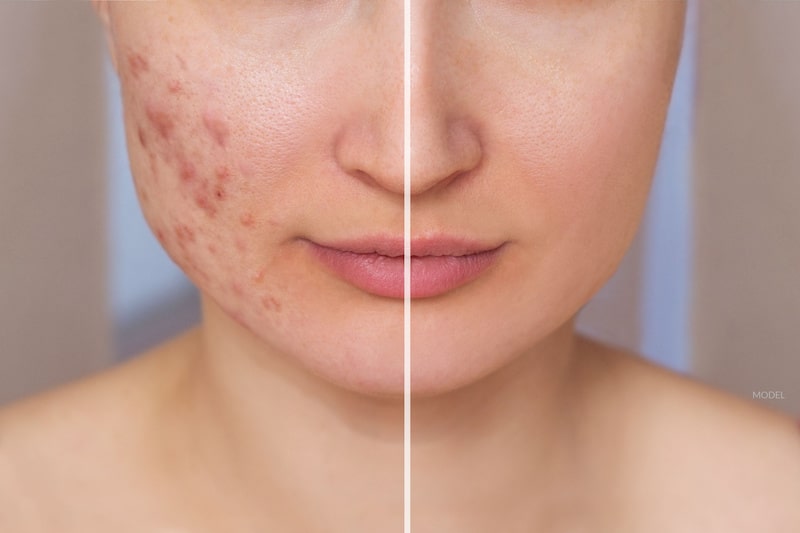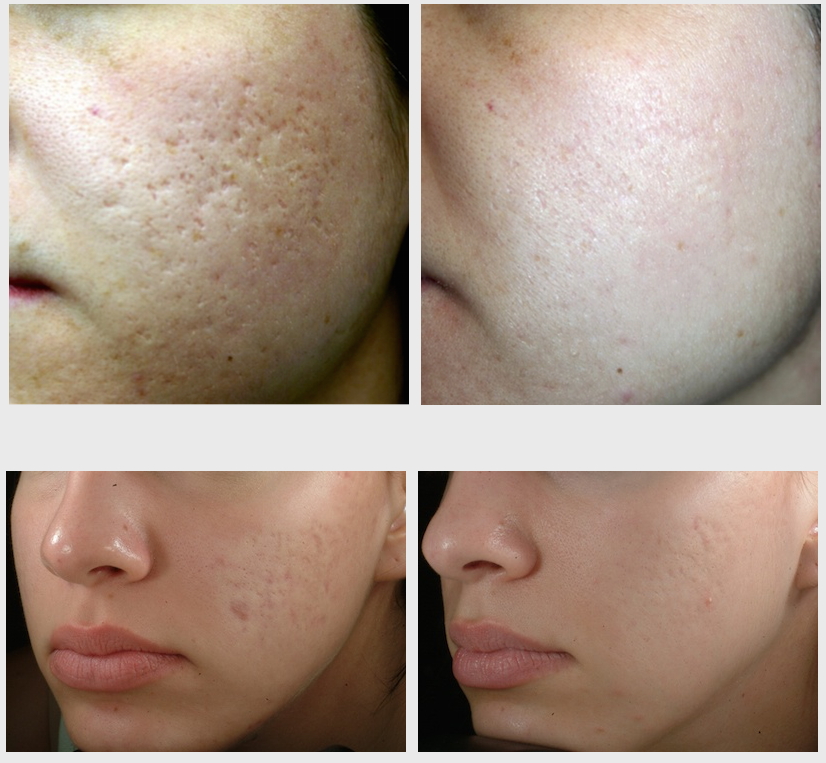Exploring Skin Problems: Identifying and Dealing With Acne Scars for Healthier Skin
Acne scars represent a considerable problem for individuals looking for to preserve healthy and balanced skin, as they can impact both appearance and self-confidence. Understanding the various types of scars, from atrophic to hypertrophic, is necessary for establishing ideal treatment choices.
Comprehending Acne Marks
Understanding acne marks is important for any individual who has actually experienced serious acne, as these marks can have a lasting effect on both physical appearance and mental well-being. When the skin undergoes inflammatory feedbacks throughout active acne lesions, acne marks develop. The intensity of scarring is frequently influenced by aspects such as the sort of acne, its period, and specific skin attributes.
The body's natural healing procedure can result in either atrophic scars, which look like clinical depressions in the skin, or hypertrophic marks, which are raised and result from overflow of collagen. Furthermore, the mental toll of acne scars ought to not be taken too lightly; several individuals report feelings of embarrassment, anxiousness, and reduced self-confidence. This emotional concern can influence social communications and general quality of life.
Attending to acne marks needs a comprehensive understanding of their development and influence. Recognition of the potential for long-lasting effects related to neglected marks can encourage individuals to seek ideal therapies. Early treatment and reliable administration approaches can substantially enhance skin look and boost mental durability, emphasizing the value of understanding the intricacies surrounding acne scars.
Kinds of Acne Scars
Acne marks can be classified right into unique types, each showing distinct features and requiring certain therapy methods. The key kinds of acne marks consist of atrophic, hypertrophic, and keloid marks.

Hypertrophic scars, in contrast, are raised above the skin degree and are the outcome of excessive collagen production throughout the recovery process. They commonly continue to be within the limits of the initial acne lesion. Keloid scars are similar yet prolong past the initial injury website, forming larger, elevated locations that can be scratchy or excruciating.
Understanding these types of marks is essential for selecting suitable treatment alternatives. Various scars might react better to particular therapies, such as laser treatments, fillers, or surgical interventions, emphasizing the importance of a tailored technique to acne scar administration.
Identifying Your Scars
Acne scars generally fall right into two classifications: atrophic and hypertrophic marks. These can even more be categorized into ice-pick marks, boxcar scars, and rolling scars, each exhibiting distinctive qualities and calling for various techniques for analysis - skin rejuvenation treatments.
Hypertrophic scars, on the other hand, are raised and take place as a result of too much collagen manufacturing throughout the healing process. click reference Acknowledging the details features of your scars-- such as structure, width, and depth-- is vital for proper identification. Furthermore, consider the circulation of marks throughout your skin, as this can show the seriousness and duration of the acne problem.
Involving with a skin specialist can offer important insights into the nature of your scars, assisting in the differentiation between different kinds. A complete understanding of your marks will eventually result in an extra tailored and effective therapy plan, making sure a clearer and healthier complexion.
Therapy Alternatives Readily Available
Determining the certain sort of acne marks existing on your skin prepares for exploring effective therapy options. Common types of acne marks consist of atrophic (clinically depressed), hypertrophic (raised), and post-inflammatory erythema.
For atrophic scars, options such as chemical peels, microneedling, and laser resurfacing are extensively made use of. Chemical peels make use of acids to remove the external layer of skin, promoting new cell development. Microneedling entails tiny needles that create micro-injuries, boosting collagen production. Laser resurfacing targets a knockout post harmed skin cells, improving texture and tone.
Hypertrophic marks can be treated with corticosteroid injections to flatten the scar or laser treatment to minimize soreness and improve look. skin rejuvenation treatments. Silicone gel sheets and stress dressings may likewise assist in managing elevated scars
On top of that, facial fillers can briefly load in anxieties from atrophic marks, while surgical excision may be proper for serious instances. Each treatment alternative has its benefits and factors to consider, making it essential to speak with a skin specialist. They read here can supply personalized referrals based on the type and intensity of your marks, as well as your skin kind and overall health and wellness.
Tips for Prevention
Efficient prevention methods can significantly decrease the probability of establishing acne marks. The initial step is to maintain a consistent skin care regimen that consists of gentle cleaning, peeling, and hydrating. Making use of non-comedogenic products assists prevent clogged up pores, which can worsen acne. Additionally, incorporating topical treatments including salicylic acid or benzoyl peroxide can effectively decrease and handle outbreaks inflammation.
Staying clear of the impulse to select or pop acne sores is critical, as this can result in deeper skin damage and raise the risk of scarring. Instead, take into consideration making use of a cool compress or over-the-counter treatments to lower swelling and soreness.
Sunlight security is another important element of avoidance; ultraviolet (UV) rays can darken scars and prevent the healing procedure. Applying a broad-spectrum sunscreen with at least SPF 30 daily can safeguard the skin and promote even healing.
Last but not least, preserving a balanced diet abundant in minerals, vitamins, and anti-oxidants supports skin health and recovery. Remaining hydrated and handling anxiety levels can also play a considerable role in decreasing acne flare-ups. By applying these approaches, people can substantially decrease their possibilities of establishing acne marks.

Final Thought
Finally, understanding and recognizing acne scars is necessary for reliable therapy and achieving much healthier skin. Various kinds of acne marks, consisting of hypertrophic and atrophic marks, necessitate certain treatments tailored to private demands. Treatment choices range from chemical peels and microneedling to corticosteroid shots, stressing the relevance of seeking advice from a dermatologist. Additionally, adopting a gentle skincare routine and securing the skin from UV exposure can considerably add to the prevention of further scarring and overall skin wellness.
The body's all-natural recovery process can result in either atrophic scars, which appear as clinical depressions in the skin, or hypertrophic scars, which are increased and result from overproduction of collagen. They are further divided right into 3 subtypes: ice choice scars, boxcar marks, and rolling scars. Acne scars generally fall right into 2 classifications: hypertrophic and atrophic scars. These can additionally be categorized into ice-pick marks, boxcar scars, and rolling scars, each showing distinctive features and needing various strategies for analysis.
Various kinds of acne marks, consisting of atrophic and hypertrophic marks, demand details treatments tailored to individual requirements.